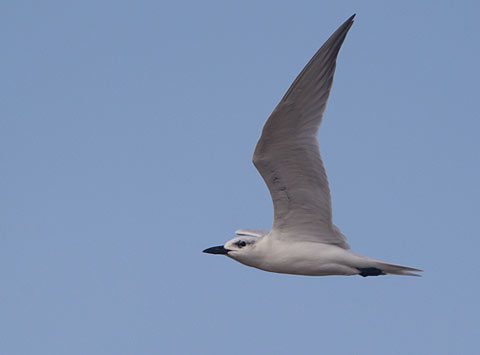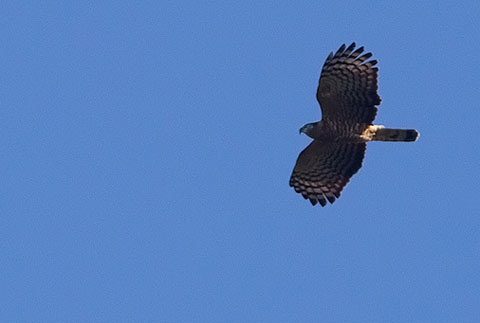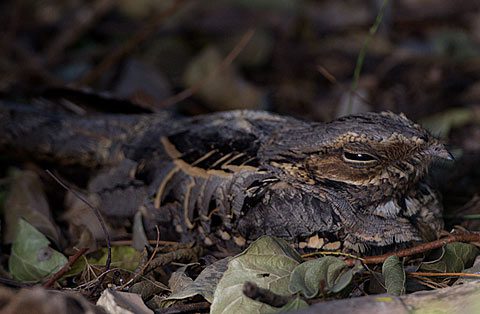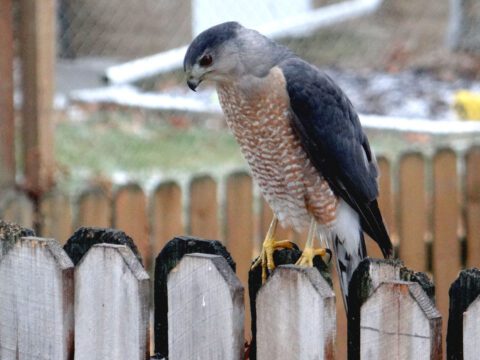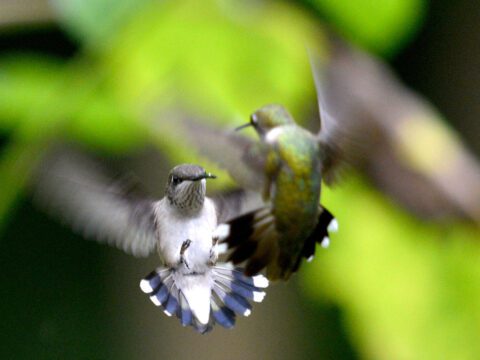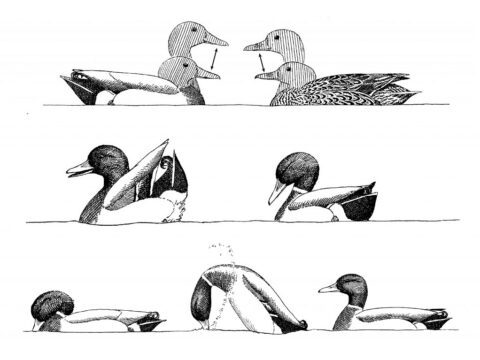Tex-Mex Birding: 3 Shots from the Rio Grande
By Chris Wood November 23, 2010
The Gull-billed Tern is an unusual tern with unusual habits 
Hook-billed Kites are one of the marquis species of the Rio Grande Valley 
Master of disguise: the Common Pauraque
If the wonderful Green Jay and ebullient Great Kiskadee are the main courses of a South Texas birding vacation, then birds like the three above are the delectable side dishes—the ones you’re not positive will show up at the table, but you spend all year anticipating, and savor for weeks afterward.
This year Chris Wood, Jessie Barry, Marshall Iliff, and Sam Crowe went to Harlingen, Texas, to represent the Cornell Lab at the Rio Grande Valley Birding Festival – surely one of the top choices among birding festivals. We had a booth at the festival so we could talk to people about our programs, and Chris, Jessie, and Marshall led field trips to seek out those specialty birds. Here are Chris Wood’s comments on the three pictures above:
If the wonderful Green Jay and ebullient Great Kiskadee are the main courses of a South Texas birding vacation, then birds like the three above are the delectable side dishes—the ones you’re not positive will show up at the table, but you spend all year anticipating, and savor for weeks afterward.
This year Chris Wood, Jessie Barry, Marshall Iliff, and Sam Crowe went to Harlingen, Texas, to represent the Cornell Lab at the Rio Grande Valley Birding Festival – surely one of the top choices among birding festivals. We had a booth at the festival so we could talk to people about our programs, and Chris, Jessie, and Marshall led field trips to seek out those specialty birds. Here are Chris Wood’s comments on the three pictures above:
 One of the highlights of the eBird walk at Estero Llano Grande was seeing four different Common Parauques resting on the ground! Pauraques are a type of nightjar related to the Whip-poor-will. Their cryptic plumage makes them exceedingly difficult to find among the leaf litter. [See Is there a bird in this photo?]
One of the highlights of the eBird walk at Estero Llano Grande was seeing four different Common Parauques resting on the ground! Pauraques are a type of nightjar related to the Whip-poor-will. Their cryptic plumage makes them exceedingly difficult to find among the leaf litter. [See Is there a bird in this photo?]
We found Hook-billed Kites on a couple different field trips. These birds have large bills that are an adaptation for feeding on tree snails. Since they are usually in dense, brushy woods feeding on these snails, the best way to find Hook-billed Kites is between 9 and 10:30 in the morning when they often get up and soar. This bird was photographed at Salineño, about an hour west of Harlingen.
A wide variety of tern species live along the Texas Coast. Gull-billed Terns are perhaps the most unusual with a very large bill reminiscent of a gull’s. Unlike most other terns, Gull-billeds do not plunge-dive for fish. Instead, they feed on crabs and other prey that they pluck from the ground, bushes, or in the air.
Two Novembers ago I got to see many of these “side dishes” myself when I was lucky enough to attend and blog from the festival. (And yes, I got to fill up on Green Jays and kiskadees as well.) I even had the unusual sight of a Gyrfalcon in 85-degree weather. It was a captive bird, expertly flown by falconer Jonathan Wood (video here).
(Images: Christopher Wood)

All About Birds
is a free resource
Available for everyone,
funded by donors like you
American Kestrel by Blair Dudeck / Macaulay Library
